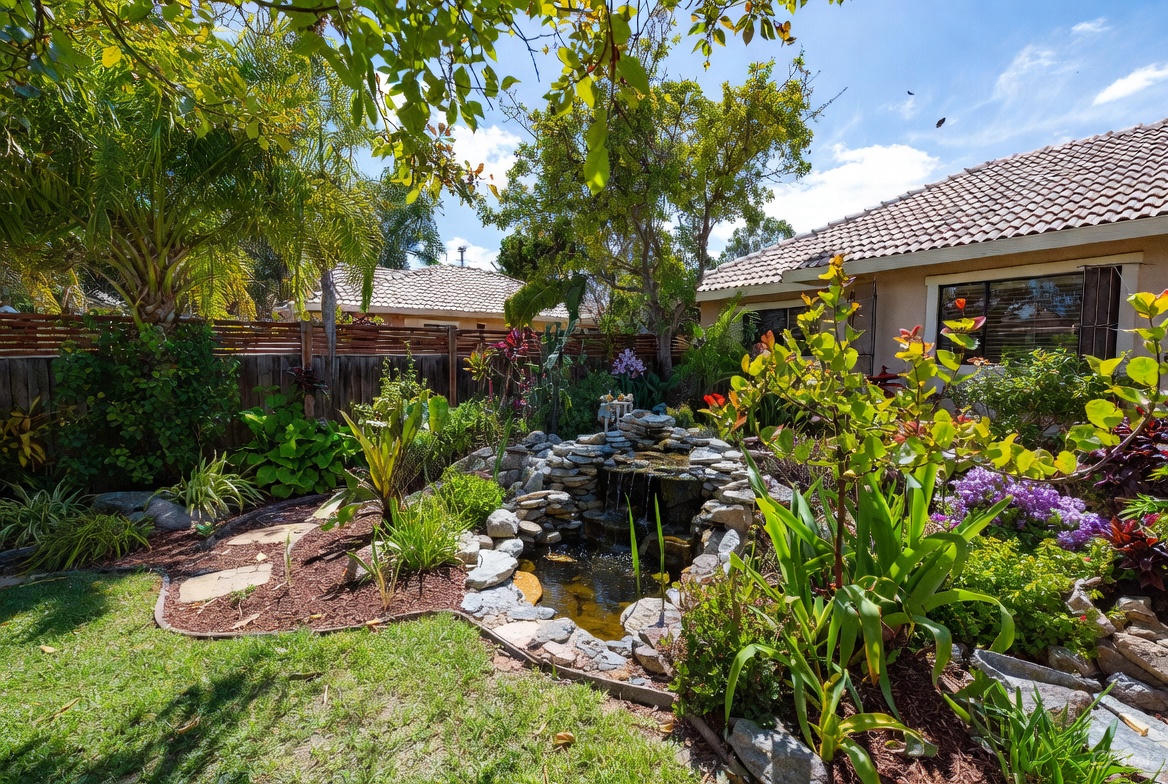
July landscaping tasks are focused on summer maintenance. As heat indexes rise, we humans easily get overheated. The over-the-top humidity and warmth affects our plants in the landscape as well.
Gardens are beginning to produce fruits and vegetables in abundance, but weeds can also threaten a revolt in the landscape at this time. Below is a quick list of chores and landscaping tasks to address for homeowners who want to spend more time enjoying their outdoor spaces.
Water and Irrigation
- Improve Irrigation – Have lawns, shrub borders, vegetables, and annual beds been irrigated? Now is the time to inspect coverage. Make sure the plants are doing well with the current irrigation. If not, it is an appropriate time to repair any issues. Vegetables and annuals should be watered deeply every 4-8 days on average. Hotter weather means more watering. Best practice is to water deeply for at least 2 to 4 hours with a soaker hose.
- Water Lawns and Gardens – Whether you have a built-in irrigation system for a homeowner or the homeowner waters by hand, it is important that a watering schedule is established. Lawns should be watered approximately one-inch per week. It is better to water longer and more deeply, but less often. Shallow watering will not encourage plants to reach down deep. Watering from 6 pm through 10 am ensures that less water is wasted. Sprinkling the lawn, for instance, in the middle of the day, is a waste of water as a lot of the sprinkles evaporate. Watering after the heat of the day or before the heat of the day enables the landscape to uptake and hold more water.

Monitor for Pest Management
- Natural Bug Control - Earwigs, Japanese beetles, aphids, hornworms, cucumber beetles, flea beetles; the list can be extensive for pests that attack a landscape. Natural management of pests in the landscape can be as simple as handpicking the little critters off the plants or perhaps shooting aphids off a rose bush with a garden hose.
- How to Find Pests - Monitor leaves by gently turning them over and looking at the back side. Keep an eye on new stems for aphids and other sucking bugs. Once you spot pests, then you must decide how to remove them or to ignore them entirely.
Download iScape now and make annual planting a breeze. Or, if you need some design help, Hire-a-Designer now and let the iScape Pro’s help guide you! iScape it!




.jpg)
.jpg)
